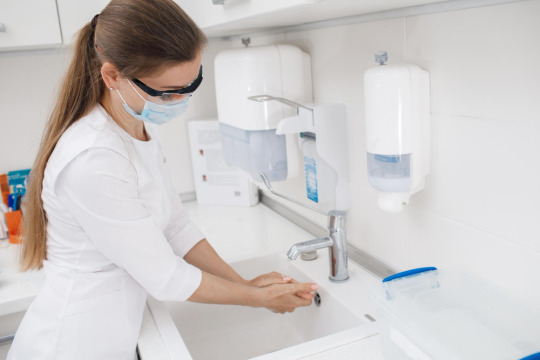Text
Protecting Your Roof Box from Fading: A Comprehensive Guide

In the quest to safeguard your roof box from the detrimental effects of fading caused by UV exposure, delve into this comprehensive guide. Roof boxes serve as indispensable companions during family vacations, offering ample storage space for luggage and essential gear. However, the persistent issue of fading can mar their appearance, detracting from the overall aesthetics of both the box and the vehicle.
Understanding the Roof Box:
A roof box serves as a valuable addition to your vehicle, providing additional storage space for camping equipment, sports gear, and other essentials. Crafted from versatile materials such as fiberglass, aluminum, and plastic, roof boxes come in various shapes and sizes to cater to diverse needs. Despite their utility, roof boxes are susceptible to fading, primarily when exposed to direct sunlight, particularly during the scorching summer months.
Here you can explore the reasons that made the roof boxes to fade. Generally, gelcoat, a type of roof box and pigmented polyester can be used to manufacture the roof box. When the material surface is directly exposed to the UV rays, especially in summer months, then sure its color and shine will start to fade and dull.
Causes of Fading:
The fading of roof boxes can be attributed to their composition, typically comprising gelcoat and pigmented polyester. Direct exposure to UV rays accelerates the process of fading, diminishing the vibrancy and luster of the box's surface. Manufacturers are compelled to adhere to stringent environmental regulations, necessitating the reduction of certain substances in their products, such as cobalt, to mitigate environmental impact.
Preventing Fading:
While it may be challenging to entirely shield the roof box from sunlight due to its fixed position atop the vehicle, several preventive measures can effectively combat fading. One such method involves minimizing direct exposure to the sun whenever possible. Additionally, employing products like Polytrol proves highly effective in restoring the color and shine of the roof box, offering a simple yet efficient solution.
Application of Polytrol:
To rejuvenate the appearance of a faded roof box using Polytrol, follow these steps:
Clean the surface of the roof box with warm, soapy water.
Allow the box to dry for approximately 12 hours.
Apply Polytrol evenly using a brush or cloth.
Let it sit for about 20 minutes before wiping away any excess product with a lint-free cloth.
Allow the roof box to dry thoroughly.
Regular application of Polytrol can effectively revive the color and shine of the roof box, combating the effects of fading over time.
Benefits of Polytrol:
Polytrol, characterized by its advanced formula, penetrates deep into the surface of the roof box, restoring its original color and vibrancy. Not only does it enhance the appearance of gelcoats, plastics, and metals, but it also offers protection against corrosion, ensuring the longevity of the roof box. Unlike conventional coatings, Polytrol leaves no film residue, guaranteeing a durable and flexible finish that withstands the rigors of UV exposure.
Additional Preventive Measures:
In addition to using Polytrol, adopting regular maintenance practices such as cleaning the roof box with a soft brush can help remove dust and contaminants, preserving its appearance. Applying protective coatings like sealant, wax, or ceramic coating offers an added layer of defense against fading. When the vehicle is not in use for an extended period, consider removing the roof box and storing it indoors or under cover to minimize exposure to sunlight.
Conclusion:
By implementing the strategies outlined above, you can effectively safeguard your roof box against fading, ensuring its longevity and maintaining its aesthetic appeal. Don't wait until fading becomes noticeable—take proactive steps to protect your roof box and enjoy worry-free travels with family and friends.
#benefits of roof box#roof box#Car Roof Box#roof boxes#car and roof box#type of roof box#Top Packing Blunders
0 notes
Text
#eye shower#emergency showers#eyewash#eyewash stations#Eye safety#emergency eyewash stations#eye wash shower#eye wash stations#eye injury#eye wash
0 notes
Text
Ensuring Eye Safety: Essential Deployment of Emergency Eyewash Stations

In the quest to identify crucial locations for emergency eyewash stations, this comprehensive guide unveils the imperative need for these safety measures. Eye damage poses a significant threat in various settings, including laboratories, industrial spaces, and commercial environments, primarily due to the omnipresence of hazardous chemicals. The eyes, being exceptionally vulnerable, are often exposed to direct contact with these substances, leading to irritation, damage, and, in extreme cases, blindness.
To mitigate such life-threatening consequences, the installation of emergency eyewash stations or eye showers in areas prone to chemical exposure becomes essential. These stations, designed as efficient water fountains, find their place in laboratories, industrial setups, and commercial spaces, providing immediate access to eye irrigation in case of accidents. The meticulous design ensures a gentle water flow directed straight to the eyes, aiding individuals in rinsing their eyes quickly after an injury.
Eyewash stations offer optimal irrigation when eyes come into contact with irritants, chemicals, or dust. A continuous 15-minute use helps clear the affected area before seeking necessary medical assistance. These stations simplify subsequent medical procedures, emphasizing their indispensability in hazardous workplaces.
Types of Eyewash Stations:
Bench-mounted eyewash stations
Wall-mounted eyewash stations
Floor-mounted eyewash stations
Where Emergency Eyewash Stations are Required:
Understanding the need for eyewash stations is crucial, especially considering that, in the past, many industries lacked these advanced safety measures. Government directives now emphasize their mandatory inclusion in all workplaces where individuals could come into direct contact with harmful chemicals or corrosive materials.
Industries prone to such risks include chemical processing factories, healthcare facilities, scientific laboratories, commercial kitchens, construction sites, chemical storage areas, educational institutions, and battery charging stations.
Chemical Processing Factories:
These environments, rife with dangers, demand heightened caution. Immediate access to eyewash stations becomes vital in case of eye exposure to chemicals, ensuring a swift removal of harmful substances.
Healthcare Facilities:
In healthcare settings, the presence of chemically formulated medicines poses a risk to workers' eyes. Eyewash stations provide a quick solution to eliminate potential issues caused by exposure to incorrectly formulated chemicals.
Scientific Laboratories:
Given the diverse chemicals housed in laboratories, the possibility of leaks or accidents can affect individuals' eyes. Eyewash stations act as a preventive measure, allowing for prompt eye rinsing in case of chemical exposure.
Commercial Kitchens:
The use of oils and gases in commercial kitchens poses a risk to the eyes of kitchen staff. In the event of accidental exposure, eyewash stations offer immediate relief by washing away irritants.
Construction Sites:
Dusty and debris-laden construction sites can irritate workers' eyes. Emergency eyewash stations play a crucial role in maintaining eye hygiene and preventing complications arising from dust or debris contact.
Educational Institutions:
Chemistry laboratories in educational institutions contain various chemicals, posing a potential threat to students' eyes. Eyewash stations are essential to quickly remove chemicals and safeguard students from eye injuries.
Battery Operated Areas:
Facilities manufacturing batteries often deal with hazardous particles. Eye showers become indispensable in these areas, offering a quick solution to mitigate potential eye damage caused by airborne battery particles.
Conclusion:
Incorporating emergency eyewash stations in identified high-risk areas is paramount to protecting individuals from serious eye accidents. This proactive measure ensures swift and effective eye rinsing, minimizing the impact of hazardous materials on eye health. Prioritizing eye safety through the strategic placement of eyewash stations is a crucial step in safeguarding the well-being of workers across various industries.
#eye shower#emergency showers#eyewash#eyewash stations#Eye safety#eye injury#emergency eyewash stations#eye wash stations#eye wash shower#eye wash
0 notes
Text
#eye shower#emergency showers#eyewash#eyewash stations#Eye safety#eye wash stations#eye wash#eye wash shower#emergency eyewash stations#eye injury
0 notes
Text
Enhancing Construction Site Safety with Portable Emergency Showers

In the dynamic landscape of construction sites, the imperative for portable emergency safety equipment, particularly emergency showers, cannot be overstated. This article delves into the significance of these crucial safety measures and how they adapt to the changing environment of construction sites.
Modern construction practices witness constant evolution, with new infrastructure processes and building methods reshaping the industry. To effectively meet current demands, construction sites must align with these changes. A secure workplace is fundamental, especially in industries like construction, where labor-intensive tasks are common. Installing top-notch portable emergency safety equipment, such as emergency showers, becomes essential for bolstering workers' safety.
The Need for Portable Emergency Safety Equipment in Construction Sites:
Construction sites are inherently chaotic, surrounded by cement, dust, and pollution. Working amidst these obstacles poses a risk of injuries and accidents. To mitigate such incidents, having accessible safety equipment is crucial. However, arranging provisions for emergency safety equipment becomes challenging, particularly in sites without proper access to power or water supplies. Eyewash/face stations and emergency showers emerge as indispensable components under such circumstances.
For sites unable to make permanent installations, opting for portable emergency safety equipment becomes imperative. High-quality portable units ensure worker safety with immediate access in the event of an accident.
Benefits of Portable Emergency Safety Equipment:
Advanced portable emergency safety equipment offers exclusive benefits. Swift response times of 10 to 15 seconds and water discharge rates of 20 gallons per minute contribute to efficient accident response. These portable shower units provide emergency treatment for serious injuries or damage caused by hazardous substances, eliminating the need for workers to run around the site for emergency showers.
Designed to adapt to changing conditions, portable equipment features a plastic-lined cylinder charged with constant pressure, easily filled and used with a hose connection. Its compact design facilitates easy storage when not in use. With large pneumatic tires and a stainless steel frame, a single person can move the cylinder.
Portable units cater to various temperature conditions on construction sites, offering pre-insulated and trace-heated models. Jacketed variations, painted with acid-resistant paint externally, provide overall frost protection, making them ideal for rapidly changing environments.
Increasing Safety on Construction Sites:
Portable emergency units not only enhance safety but also connect seamlessly with emergency showers and eyewash stations. This integration ensures targeted and maximum relief, utilizing the benefits of a full-size shower in a compact portable unit. In instances where supplementary showers are unavailable on-site, additional safety precautions may be necessary when using portable emergency units.
Larger portable emergency safety equipment, compliant with ANSI standards and holding up to 530 gallons, can be filled with water by hose and easily transported to locations with standard towing hitches. The towing hitch and A-frame enhance mobility, allowing these safety units to be towed by vehicles, making them versatile for various settings.
To further cater to diverse needs, the wheel spacing of portable units is adjustable, enabling them to fit through standard door openings for indoor use, such as acid stores or laboratories.
Ensuring Workplace Safety:
Portable emergency safety equipment is indispensable for providing immediate assistance to injured workers, offering exclusive benefits that address the dynamic environment of construction sites. Utilizing these portable units ensures workplace safety is taken to the next level.
Protecting Workers:
Advanced portable emergency safety equipment plays a pivotal role in protecting construction site workers. Given the nature of their demanding work, these workers are prone to injuries. Portable emergency units contribute to quick recovery, safeguarding workers' well-being effectively.
Conclusion:
In conclusion, the imperative for construction sites to have portable emergency safety equipment, including emergency showers, is evident. Implementation of these safety measures enhances workplace safety, protects workers, and addresses the diverse demands of the construction environment. Embrace portable emergency safety equipment on your construction site to elevate safety and safeguard the well-being of your workforce.
#eye shower#emergency showers#eyewash#eyewash stations#Eye safety#eye injury#eye wash#eye wash stations#eye wash shower#emergency eyewash stations
0 notes
Text
0 notes
Text
Safeguarding Restaurant Workers: The Crucial Role of Eye Showers

In the realm of restaurant safety, the presence of eye showers holds paramount importance. This guide delves into the crucial role that eye showers play in enhancing worker safety within the restaurant environment. Restaurants, with their frequent exposure to hot oils and hazardous chemicals, pose inherent risks to workers. The combination of high temperatures and dense smoke can lead to eye irritation issues and, in severe cases, permanent vision loss. As such, taking proactive measures to increase worker safety becomes imperative for restaurant owners.
Significance of Eye Showers in Restaurants
The significance of eye showers becomes evident when considering the presence of hazardous materials in restaurants. Workers face a constant risk of direct exposure to substances that can cause severe injuries, including chemical burns, corneal damage, and vision loss. The immediate use of eye showers within the first 10 to 15 seconds following exposure is crucial for effective treatment and preventing long-term consequences.
Various eyewash stations and emergency eye showers are available to facilitate immediate eye washing in case of accidents. These devices are designed for quick and simple usage, enabling workers to swiftly recover from accidents involving chemicals or other contaminants. Installing eye washes in restaurants emerges as a practical and necessary solution to mitigate the impact of workplace accidents.
Importance of Eye Showers: Impact and Consequences
While many restaurants allocate funds for various aspects of their operations, the installation of eye showers is often overlooked. Neglecting this essential safety measure can lead to expensive consequences and disastrous outcomes. Government agencies are increasingly monitoring restaurant activities, emphasizing workplace safety alongside food service standards. Failure to equip restaurants with essential safety equipment, including eye showers, can result in fines and, in extreme cases, the cancellation of restaurant licenses.
Adhering to Regulations: OSHA Guidelines
Following Occupational Safety and Health Administration (OSHA) regulations, establishments like restaurants are required to have eye showers to ensure worker safety. The proximity of these eye wash stations to the workplace is crucial, allowing workers to flush their eyes within the critical 10 to 15 seconds timeframe to prevent serious injuries or permanent vision loss. The government’s strict oversight includes fines for non-compliance, making it imperative for restaurant owners to install eye washes and avoid legal repercussions.
Mitigating Risks: Cleaning Agents and Hazardous Materials
The hazardous chemicals and corrosive materials present in cleaning agents used by restaurants pose a significant risk to workers. Without proper safety measures, such as emergency showers or eyewash stations, restaurants may face fines based on the materials used and the associated risks for workers. Adhering to restaurant safety guidelines and complying with OSHA regulations is the best approach to avoid legal penalties and ensure worker safety.
Elevating Worker Safety in Fast-Paced Environments
In the fast-paced environment of restaurants, emergency showers, eyewash stations, and other safety equipment are instrumental in elevating worker safety to regulatory standards. Even small restaurants, exempt from certain regulations, benefit from installing eye washes for personal or customer safety. This proactive approach not only safeguards lives in emergency circumstances but also ensures uninterrupted restaurant operations.
0 notes
Text
#eye shower#emergency showers#eyewash#eyewash stations#Eye safety#eye wash#eye injury#emergency eyewash stations
0 notes
Text
Understanding Emergency Showers and Eyewash Stations

In today's dynamic work environments, particularly in chemical industries and laboratories, the potential for accidental chemical exposure is an inherent risk. While complete elimination of such exposure may be impossible, proactive safety measures play a pivotal role. One key aspect of this safety net is the strategic placement of emergency showers and eyewash stations in workspaces, providing essential first aid in case of chemical accidents.
Beyond these safety fixtures, the use of additional protective gear such as glasses, face shields, and adherence to Personal Protective Equipment (PPE) procedures are recommended to mitigate the severity of chemical accidents.
Chemical substances, even seemingly harmless ones, can lead to anything from minor irritation to permanent eye injuries. Swift action is crucial, with treatment ideally initiated within 10 to 15 seconds of exposure to corrosive substances. Delaying treatment can result in severe consequences, including permanent vision loss or other serious injuries. Here, the term "treatment" extends beyond traditional medical attention to encompass the immediate availability of emergency showers and eyewash stations within the workspace.
Critical Areas Requiring Emergency Showers & Eyewash Stations:
Understanding the critical areas where emergency showers and eyewash stations are essential is fundamental. These areas include:
Hazardous chemical discharge zones
Dipping and coating operations
Classrooms and laboratories
Battery charging areas
Spraying operations
Very dusty environments
Distinguishing Between Emergency Showers and Eyewash Stations:
When it comes to responding to chemical accidents, it's vital to differentiate between emergency showers and eyewash stations:
Emergency Showers:
Designed for injuries to the head or body caused by hazardous chemicals, emergency showers provide a means to wash affected areas. However, they are not suitable for flushing the face and eyes due to the high-pressure water, which may cause damage.
Eyewash Stations:
Specifically purposed for immediate flushing of the face and eyes following a chemical accident, eyewash stations require action within the first 15 minutes before seeking medical attention. The choice between emergency showers and eyewash stations depends on the nature of the chemical hazard faced by workers, with a hazard assessment guiding the selection.
Variations of Emergency Showers & Eyewash Stations:
Face & Eyewash Stations:
Available in self-contained and plumbed options.
ANSI-certified for industry use.
Indoor Safety Showers:
Unheated stainless/galvanized steel variations.
Ceiling, free-standing, and wall-mounted models for diverse configurations.
Ideal for areas handling caustic or chemical substances.
Outdoor Safety Showers:
Suitable for cold or hot climates.
Self-draining design for warmer climates.
Freeze-protected models for colder climates.
Emergency Showers with Tanks:
Ideal for locations with limited access to the main water supply.
Holds approximately 100 gallons of water, ensuring a steady stream for 15 minutes.
Galvanized steel frame construction with external water level indicators.
Temperature Controlled Safety Showers:
Provides a steady flow of warm water for 15 minutes.
Prevents shock from frigid water temperatures.
Includes eyewash stations and pre-insulated polyurethane tanks to minimize heat loss.
Mobile Safety Showers & Washes:
Perfect for situations where existing showers are undergoing maintenance or in areas with no water supply.
Available in various configurations and sizes.
Decontamination Showers:
Specifically designed for hazmat applications, including chemical attacks, natural disasters, and incidents involving biological or nuclear agents.
Offers different configurations and sizes for diverse applications.
Conclusion:
In conclusion, a comprehensive understanding of emergency showers and eyewash stations is vital for creating a safer workplace environment. Swift response through eye flushing and showering in the affected areas can prevent severe consequences. Thus, the widespread implementation of emergency showers and eyewash stations across workspaces remains a cornerstone of ensuring employee safety in chemical industries and laboratories.
0 notes
Text
#Eye wash shower#eye shower#Eyewash#Eyewash Stations#Eye wash#Eye injury#Emergency eyewash stations#eye wash stations
0 notes
Text
The Crucial Role of Emergency Eyewash Stations in Workplace Safety

In any workplace where hazardous materials are handled, safety takes precedence. Among the essential safety features, emergency eye shower stand out as indispensable guardians of vision and well-being. In this blog post, we delve into the significance of these stations, their proper usage, and the maintenance practices vital for ensuring workplace safety.
Understanding Eyewash Stations
Imagine a scenario where a worker faces exposure to harmful substances or suffers an eye injury due to unforeseen accidents. This is where an eyewash station comes into play. Serving as a frontline defense, these stations are strategically positioned near areas prone to high risks of eye injuries, offering immediate relief from chemical burns, foreign object intrusion, and thermal injuries.
The Importance of Eyewash Stations
Eye injuries, particularly those resulting from chemical burns, pose significant risks not only in terms of immediate discomfort but also potential long-term vision impairment if not promptly treated. Eyewash stations provide a crucial first line of defense, mitigating the severity of injuries and potentially averting serious consequences such as blindness.
Proper Usage of Eyewash Stations
Using an eyewash station correctly is vital for effective treatment. Employees must be trained in the proper procedure, which involves activating the station, ensuring a comfortable water temperature, and rinsing the affected eye for a minimum of 15 minutes. It’s important to refrain from rubbing the eye and seek medical attention promptly for further evaluation if necessary.
Maintaining Eyewash Stations for Optimal Functionality
Proper eyewash station maintenance are paramount to ensure their functionality during emergencies. Proper cleaning, stocking with clean water, temperature regulation, and timely replacement of faulty parts are essential practices. Moreover, employees should undergo training to familiarize themselves with eyewash station usage and emergency protocols.
Conclusion: Prioritizing Workplace Safety
In conclusion, emergency eyewash stations are indispensable safety features in facilities dealing with hazardous materials. By providing prompt relief in case of eye injuries, these stations play a crucial role in safeguarding vision and minimizing the severity of injuries. Proper usage, regular maintenance, and employee training are key elements in ensuring the effectiveness of eyewash stations and upholding workplace safety standards.
Remember, prioritizing safety is not just a responsibility but a commitment to protecting the well-being of everyone in the workplace. By investing in proper safety measures such as eyewash stations and fostering a culture of awareness and preparedness, we can create safer work environments where employees can thrive without compromising their health and safety.
#Eye wash shower#eye shower#Eyewash#Eyewash Stations#Eye wash#Eye injury#Emergency eyewash stations#eye wash stations
0 notes
Text
0 notes
Text
The Crucial Role of Emergency Showers and Eyewash Stations

In any workplace, the safety of employees should always be a top priority. Despite meticulous precautions, misconceptions and accidents can still happen. This underscores the critical need for a robust safety infrastructure within a workspace. One essential component of this infrastructure is the inclusion of emergency showers and eyewash stations, which play a pivotal role in ensuring the well-being of employees.
The Mandatory Presence of Emergency Showers and Eyewash Stations
Irrespective of the nature of the work being conducted — be it in laboratories, factories, chemical plants, or industrial settings — the presence of emergency showers and eyewash stations is not just recommended; it’s mandatory. These facilities are designed to swiftly wash away hazardous chemicals that could cause injury to workers. The significance of these safety installations cannot be overstated; they create a secure environment for employees, fostering a culture of personal protection.
Versatility in Emergency Response
Beyond chemical exposure, emergency showers can serve additional purposes, such as extinguishing clothing fires and flushing away harmful substances. This versatility makes them indispensable in various emergency scenarios. The question arises: why are emergency showers and eyewash stations considered vital elements in workplace safety?
Key Factors that Make Emergency Showers and Eyewash Stations Vital:
Maintaining a Safe Working Environment:
Emergency showers and eyewash stations are strategically placed based on the unique properties of the chemicals used in a specific work area. This ensures that in the event of accidental exposure, employees can quickly and effectively neutralize any potential harm.
Appropriateness for Specific Job Functions:
Different jobs and work areas involve varying degrees of risk due to exposure to dangerous chemicals. Proper placement of emergency showers and eyewash stations in easily accessible locations is crucial, especially in areas where the likelihood of chemical contact is higher.
Timely Intervention:
Quick access is a defining feature of these safety installations. Within 10 seconds, an employee should be able to reach an emergency shower or eyewash station, emphasizing the importance of immediate response in case of chemical exposure.
Preventing Fire Risks:
The placement of emergency showers and eyewash stations significantly closer to workstations is critical, especially in areas prone to potential fire risks. Rigorous risk assessments help determine the most effective locations for these installations.
Routine Inspection and Maintenance:
Responsibility for the upkeep of emergency showers and eyewash stations falls on designated individuals who should conduct weekly inspections. Regular checks, including examinations for valve leakage and clogged openings, are vital to maintaining functionality.
Effective Signage:
Clearly marked signage indicating the location of emergency showers and eyewash stations is crucial for quick identification during emergencies. Employees must be familiar with the location and operation of these facilities to use them effectively.
Accessibility for All:
Placement considerations should include easy access for all employees, including those with vision impairments. Proximity to work areas and chemical regions ensures that these safety measures are readily available to everyone.
Conclusion: Prioritizing Safety for Employees and Workspaces
Thus, emergency showers and eyewash stations must be in factories, chemical plants, etc. Employees should work in a safe environment and not face any risks.
An emergency shower will allow them to escape dangerous chemical contact and have possible safety precautions in the workplace. Thus, it is easy for us to escape from the chemical contacts by placing eyewash stations and emergency showers in the workplace areas.
1 note
·
View note